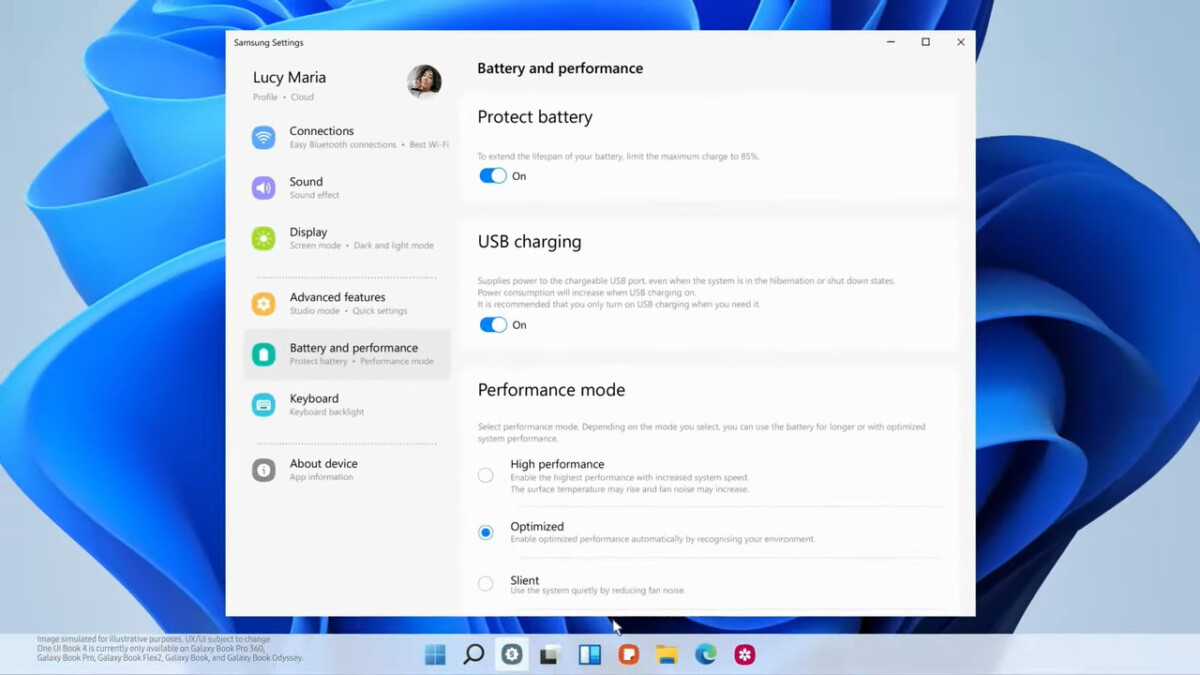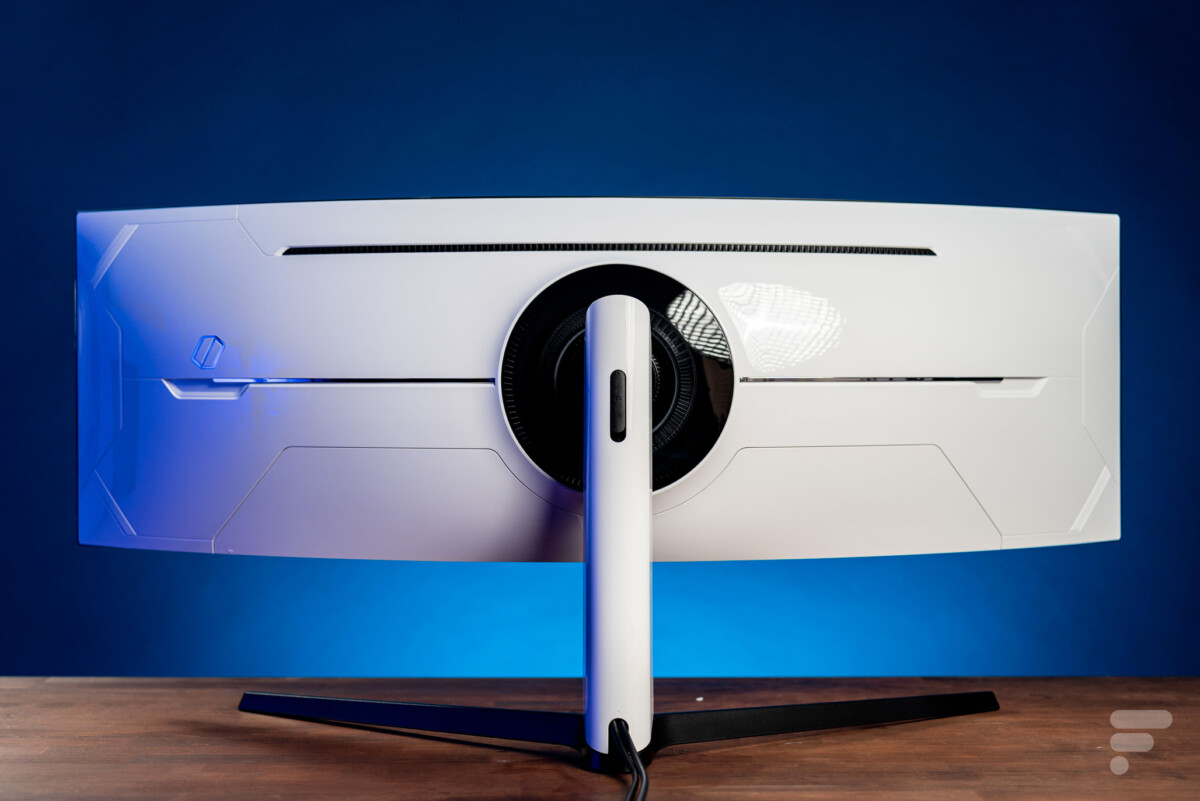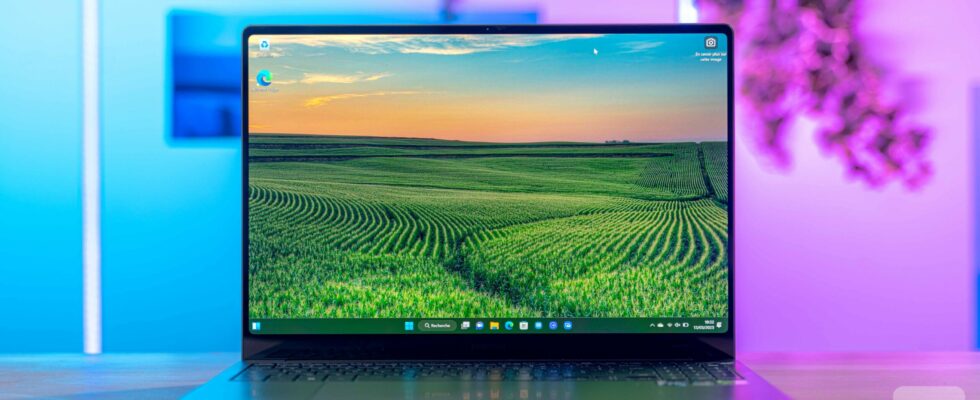With its expertise in the smartphone, Samsung sets out to conquer the PC market. We were able to question the designer of the Galaxy Book 3 on the choices, but also the constraints of the brand.
Can Samsung dominate the PC as it conquered the smartphone? During MWC 2023, Frandroid had the opportunity to meet Hark-sang Kim, one of the masterminds behind the Galaxy Book 3 Ultra. More specifically, he is Executive Vice President and Head of the New Computing R&D team within the Mobile eXperience Business division of Samsung Electronics, which means that he had a hand in the technical choices behind the creation of the Samsung’s top-of-the-line ultraportable.
We spoke with him about different aspects of the design of the flagship such as the interface, the challenges of an Oled screen, repairability and the future of the Odyssey brand.
Bringing the Galaxy Experience to Windows
A Windows laptop and an Android smartphone are very different. Unlike the mobile world, Samsung doesn’t have full control over UI design. Where a Galaxy smartphone is inevitably distinguished from a Xiaomi smartphone under MIUI, laptop PCs more or less all offer the same interface, that of Windows 11. However, Samsung wanted to differentiate itself from competitors.

Hark-sang Kim explains to us that “ several key Galaxy Book 3 Ultra features, like syncing with a Samsung smartphone or the ability to use a Galaxy tablet as a second screen, are part of a larger One UI experience”. This experience, Samsung promises “ to maintain it for several years with updates “, as she does with her smartphones. To give a simple and concrete example, Samsung wants to keep the pre-installed applications on its Galaxy Book up to date so that the icons correspond well to those of future versions of One UI on smartphones.
Samsung’s know-how in the Oled
It doesn’t stop at a simple software interface. In particular, we wanted to ask him about the integration of the Amoled screen into Samsung computers. This type of screen technology is increasingly popular on high-end PCs, but the fear of long-term screen burn-in is still there.

On this subject, he does not kick in touch and we detail in a few points what Samsung has put in place to avoid problems. First of all, and we can give him this point, he reminds us that ” the firm has been integrating Oled screens into its mobile products for many years» and that she has therefore forged herself «subject matter expertise “. On the PC, Samsung Electronics has been offering Oled screens for four to five years and“every two years, the technology evolves to become more sustainable”.The panels that today equip Samsung laptops carry within them“the fruits of these improvements”but that’s not all.
Samsung has worked out several techniques with Microsoft to reduce the risks. The best known is that of pixel shift, already used on many screens. It consists of moving the image displayed on the screen to energize the pixels and ensure that they do not display the same element for too long.
You can change the storage
In 2023, it is impossible to ignore issues such as the impact on the environment and the repairability of the product. Here, for an ultraportable, Samsung does not promise miracles. During our meeting, we were able to attend a demonstration of the dismantling of the device. This one seemed very easy to us and only took a few seconds. Simply remove a few screws to open the chassis and access the device’s storage. The Galaxy Book 3 Ultra offers an easily accessible NVMe port to allow the user to add additional storage. The brand could have gone further, but every small victory is worth taking.
And Samsung Odyssey Gaming PCs?
Samsung only offers work ultraportables on the market, but the firm offers monitors aimed at video game players with its Odyssey line. The gaming laptop market being in vogue, one wonders if Samsung intends to try it. Hark-sang Kim obviously does not exclude this possibility without confirming it.

The engineer chooses his words well to explain to us that “the Galaxy Book 3 Ultra, with its GeForce RTX 4070 60W, can already offer video gamesand that Samsung wants above all to bet on an ultramobile experience. However, Samsung is “always opento the idea of extending its range to Odyssey.
What Samsung didn’t tell us
We also asked questions about certain technical choices, or rather about the constraints that Samsung must undergo today. Hark-sang Kim indeed insisted on “the importance of RAM accessible to the CPU and faster RAM accessible to the GPU“. Today, however, Apple proposes to unify these two volumes for a singlepoolof very high-speed unified memory and this greatly succeeds with the brand’s M1 and M2 chips. If Apple can afford it, it is thanks to the technical mastery of its hardware and in particular the use of the ARM architecture to bring together the memory, the CPU and the GPU within the same SoC.

Faced with this contradiction, Hark-sang Kim prefers to highlight its partners such as Intel, Nvidia or Microsoft, which allow Samsung to market its Galaxy Book 3 Ultra today.
If he does not openly admit it, the manufacturer must also do with a legacy of the PC which is less agile, still driven by the x86 architecture of AMD and Intel. Windows on ARM is still not a really convincing solution and Qualcomm is not as relevant with its Snapdragons as it is on smartphones. The firm therefore has no real choice but to wait if it hopes to one day offer solutions as differentiating as Apple does today.
To follow us, we invite you to download our Android and iOS application. You can read our articles, files, and watch our latest YouTube videos.
